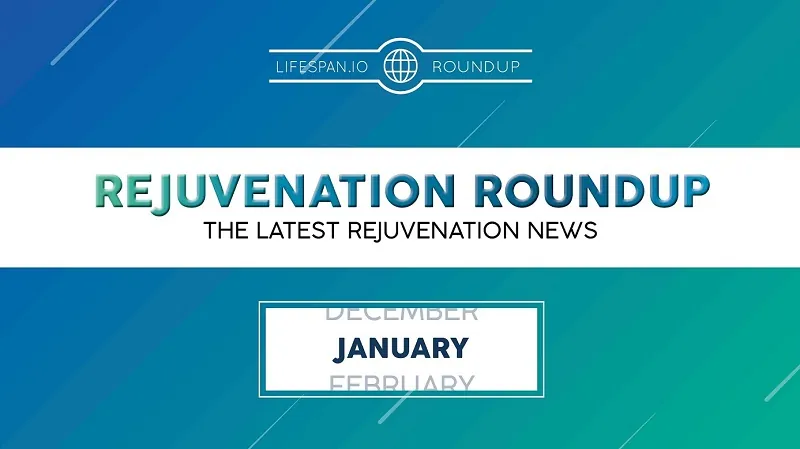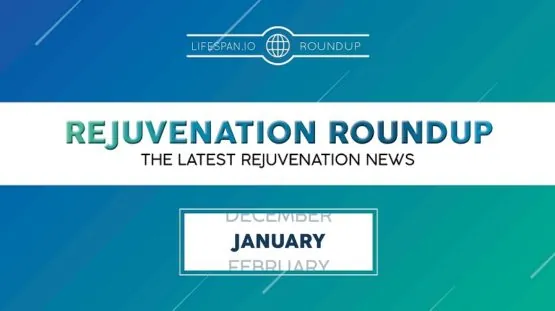2020 has been a common year to define the beginning of “the future”, so now’s a great time to discover just how close real biotechnology has come to popular expectations. To kick off the first month of the new year, we have plenty of research to talk about, along with announcements, three X10 episodes, and one more video from last year’s EARD conference.
LEAF News
Team and activities
Brian Kennedy Joins the LEAF Scientific Advisory Board: Professor Kennedy, a Distinguished Professor in the Department of Biochemistry and Physiology at the University of Singapore, offers his insight and expertise as part of our SAB.
Journal Club A Human Trial for Skin Aging: Rapamycin is a common research topic for aging researchers, and this month, Oliver hosted a discussion on a human trial of its effects on skin aging,Rejuvenation Roundup Podcast
Ryan O’Shea of Future Grind hosts this month’s podcast, showcasing the events and research discussed here.
Research Roundup
Treating Glaucoma With Senolytics: In an animal model of glaucoma, ganglion cell death was halved by removing the inflammation caused by the senescence-associated secretory phenotype (SASP) – which required the removal of senescent cells.
Fisetin: This explanatory article offers a broad look at this common supplement, identifying its sources, effectiveness as a senolytic, and clinical studies.
Mitochondria Found Independently Living in Blood: This insightful study shows mitochondria living in independent structures outside of cells. Why these mitochondria are there, and what purpose they serve for the body, are facts not yet discovered.
Dasatinib plus quercetin prevents uterine age-related dysfunction and fibrosis in mice: Dasatinib and quercetin are a well-known combination of senolytics, and this study shows that they remove the senescent cells that are responsible for uterine problems in older mice.
Cellular senescence changes extracellular vesicles’ cargo and function: This study outlines a direct link between cellular senescence and altered intercellular communication, two of the hallmarks of aging; in this case, the intercellular communication consists of extracellular vesicles.
Depletion of senescent astrocytes protects cognitive function in mice: Radiotherapies for cancer cause brain aging, but this study shows that senolytics reverse some of this damage in mice.
FOXO4-DRI restores testosterone production in mice: Another senolytic study shows that removing senescent cells ameliorates late-onset hypogonadism, at least in mice.
Good diets: In line with previous research on the subject, three separate studies show that the Mediterranean diet and caloric restriction are connected with healthy longevity.
Exercise: Again entirely unexpectedly, researchers have documented how exercise can extend healthy lifespan, whether that exercise involves marathons or sprints.
An extended keto diet leads to obesity in mice: An unrestricted diet in which most calories are from fat rather than carbohydrates causes obesity and harms metabolic health in this mouse study.
High-protein diets increase cardiovascular risk: This study shows that excessive protein causes mitochondrial dysfunction in macrophages, which leads to their greater accumulation in cardiovascular plaque.
CRISPR/Cas9 discovers the secret of regeneration in the axolotl: This is a small salamander with a large genome, and researchers have used modern gene editing technologies to discover why it can regenerate.
Well-maintained splicing may cause negiglible senescence in mole rats: This study has found that naked mole rats control their DNA splicing more effectively than in other species, preventing adverse events.
NAD+ supplementation prevents hearing loss in prematurely aged mice: In a mouse model of Cockayne syndrome, a condition that causes premature aging and hearing loss, nicotinamide riboside (NR), a source of NAD+, was shown to be effective.
Dill extract produces elastin fibers in the ascending aortae of aged mice: After ingesting dill extract for three months in drinking water, aged mice have been shown to produce elastin fibers that restore the function of their critical arteries.
News Nuggets
Revel Pharma to Develop Glucosepane Breakers: Starting with research funded by Yale Lab with the cooperation of SENS Research Foundation, the biotechnology company Revel Pharma has begun to develop a method of removing glucosepane, the principal source of dangerous age-related collagen crosslinks in human beings.
Three Groundbreaking Longevity Startups: This article discusses Underdog Pharmaceuticals, Juvena Therapeutics, and Revel Pharmaceuticals, three startups that are likely to make waves in the future of rejuvenation biotechnology development.
Building an Atlas of Senescent Cells: A team of researchers led by Prof. Judy Campisi has created an atlas that describes senescenent cells and the proteins they produce as part of the senescence-associated secretory phenotype (SASP).




